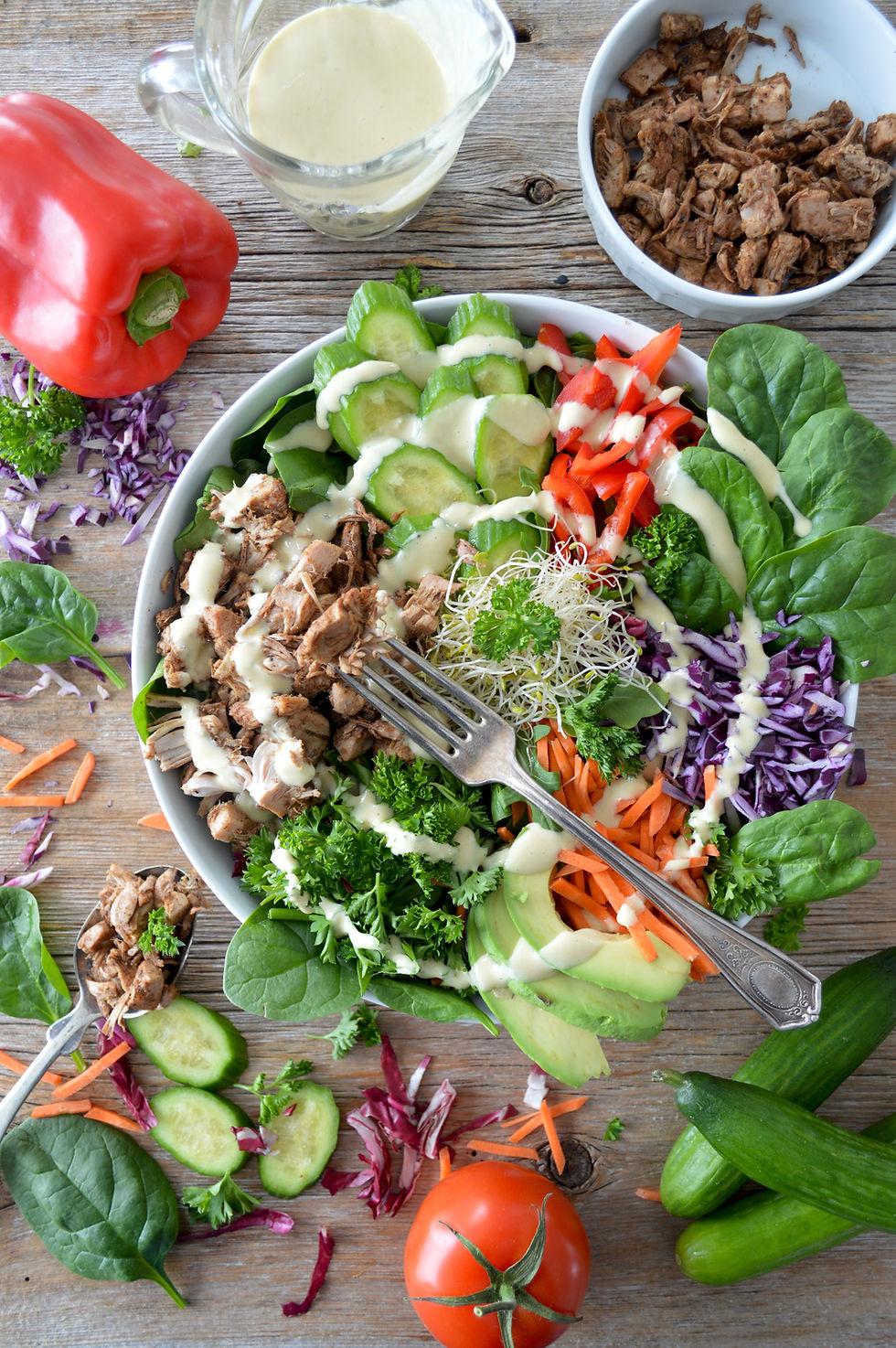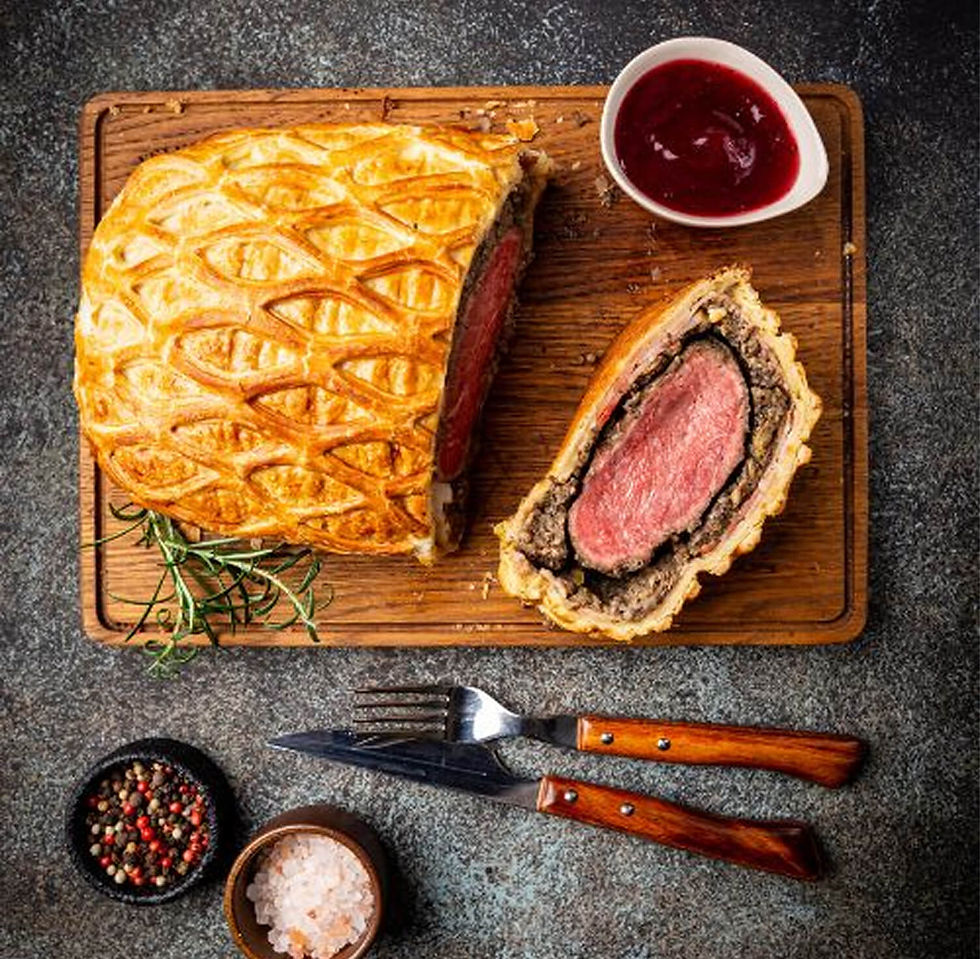Raising Awareness: “Join Hands for Epilepsy” (Featuring Grace Shumba)
- Chef Rod

- Jan 10
- 5 min read
Hey there, Skinny Readers! I hope your second week of January was nothing short of amazing! Can you believe we’re already diving headfirst into the hustle and grind of the year? Time flies, but as always, we’re back with another electrifying edition of the Skinny Chef Diaries!
This week, we’re shining a spotlight on an important and often misunderstood topic: Epilepsy.
What is Epilepsy?

Think of an epileptic seizure like a sudden thunderstorm—a powerful electrical discharge in the brain. Epilepsy is a chronic neurological condition that causes these storms, leading to brief episodes of abnormal brain activity. The symptoms? They vary widely.
Severe episodes may result in unconsciousness, while milder symptoms might include confusion or difficulty breathing. It’s a complex condition that affects people differently, but awareness is the first step toward understanding and supporting those who live with it.
Fuel Your Brain: The Power of Food
Let’s talk about how food can play a role in managing epilepsy. Research dating back to the 1920s suggests that high-fat, low-carb diets, like the ketogenic diet, can help control seizures in some individuals.

These diets push the body into a state called ketosis, where it burns fat instead of carbohydrates for energy. Ketosis is a game-changer—it alters glucose levels, hormones, and gut health in ways that may protect against seizures. Dr. Beth Zupec-Kania, a leading researcher and co-author of Ketogenic Diet Therapies for Neurological Disorders Pocket Guide, has explored this extensively.
Here’s a sample keto menu to try:
Breakfast
Fluffy scrambled eggs with cheese and butter, served alongside a fresh piece of fruit.
Lunch
A juicy beef patty topped with melted cheese, a side of steamed broccoli, and buttery glazed carrots.
Dinner
Grilled chicken breast smothered in mayo and cheese, paired with sautéed green beans.
Snack
Cream cheese dip served with crisp veggies or slices of fruit.
Sticking to ketosis not only fuels your body but could also be a powerful ally in reducing seizures.
Featuring Grace Shumba

This week, I had the absolute pleasure of reconnecting with a dear friend, Grace Shumba. Skinny Readers, this woman is a legend! Fun fact: Grace introduced me to my first girlfriend back in my teenage years in Zimbabwe (no, I won’t spill the beans—you’ll need to grab a copy of Skinny Chef Diaries to uncover that juicy tidbit!).
Grace is an incredible advocate for epilepsy awareness through Join Hands for Epilepsy (JHFE), a nonprofit organization founded by her sister, Trish Shumba, who lives with epilepsy. Let’s dive into my inspiring chat with her.
The Interview
Skinny Chef: Grace, it’s amazing to have you here! Tell us a bit about yourself and why this cause means so much to you.
Grace: Thank you for having me! I’m Grace Shumba, a proud Zimbabwean with a background in Finance, Commerce, and Business Administration. I serve as the secretary for Join Hands for Epilepsy Foundation (JHFE), based in Harare.
JHFE is all about raising awareness, educating communities, and fighting the stigma surrounding epilepsy. We work tirelessly to provide affordable treatment and create a supportive environment for those living with this condition.

One of our biggest achievements is delivering life-saving medications to over 120 people in low-income areas around Harare East, including Epworth, Mabvuku, and Caledonia. These are individuals who would otherwise go without due to financial challenges.
Personally, this cause resonates deeply with me because epilepsy remains misunderstood and overlooked, particularly in Zimbabwe. I’m committed to breaking down barriers and creating lasting change for people living with this condition.
Skinny Chef: Incredible work, Grace! What does a typical day look like for you?
Grace: My days are a mix of personal growth and advocacy. I start with reading, meditating, and researching ways to better serve our members.
At JHFE, I focus on three core pillars:
Advocacy and Awareness

Organizing campaigns and events to educate communities and dispel harmful myths about epilepsy.
Access to Treatment

Ensuring life-saving medications reach those who need them most, especially in underserved areas.
Caregiver Support

Providing resources, counselling, and training to families and caregivers, so they can better support their loved ones. Every day brings new challenges, but also new opportunities to make a real difference.
Skinny Chef: Do you follow a fitness routine?
Grace: Absolutely! Staying active is essential, not just physically but mentally too. I love walking, cooking traditional meals, and doing light exercises. Walking clears my mind and keeps me energized, while cooking connects me to my roots.
Fitness is particularly important for individuals with epilepsy. Research shows that regular exercise can improve sleep, reduce stress, and even help stabilize brain activity, all of which are crucial for managing epilepsy.
Through this blog, I hope to inspire others to embrace fitness—whether it’s a simple walk or preparing nutritious meals, every step counts toward better health.
Skinny Chef: How can readers support Join Hands for Epilepsy?
Grace: We’re always grateful for support! Donations—whether cash, food, clothes, or medical supplies—help us make a difference. Here’s how you can contribute:
Email: admin@joinhandsforepilepsy.com or grace.shumba@joinhandsforepilepsy.com
PayPal: Visit our secure donation page
Facebook: Follow us on Facebook
Skinny Chef: Final question: What’s your go-to indulgence food?
Grace: I’ll confess—a greasy burger with crispy fries is my guilty pleasure! I balance it out with apple juice (at least, that’s what I tell myself!).
But working with JHFE has taught me the importance of balanced, brain-healthy meals. It’s a reminder to all of us to make mindful food choices that benefit our well-being.
Wrapping It Up

There you have it, Skinny Readers! Grace’s passion and dedication to raising epilepsy awareness are nothing short of inspiring. If you’d like to support her incredible work with Join Hands for Epilepsy, check out the links above.
To close, I’m sharing a special recipe from Skinny Chef Diaries—perfect for anyone looking to manage epilepsy symptoms through diet.
Baked Oatmeal Chicken Cordon Bleu

This is a delicious classic French dish of chicken breasts stuffed with ham and Swiss cheese. I have modified this classic dish tobe a healthier alternative. I substitute breadcrumbs and flour with oatmeal, as oatmeal is wholegrain. It contains zinc and iron, both important for people suffering from anaemia. This recipe is also great for maintaining low blood sugar levels and is suitable for people on a low-carb diet, like the Keto or Atkins diets.
Ingredients
3 boneless, skinless chicken breasts, butter flied and pounded to ¼ inch thickness
½ cup oats
1½ teaspoons Dijon mustard
2 teaspoons olive oil
Salt and pepper to taste
1 teaspoon paprika
3 slices (115g) Swiss cheese
3 slices (115g) ham
Serves 3
Methods
1. Preheat the oven to 425°F/200°C. In a small bowl, mix the oats, paprika and olive oil until the oats are coated evenly. Set aside. Spray a baking sheet with non-stick cooking spray and place chicken,butterflied open, onto the sheet. Season both sides of the chicken with salt and pepper.
2. Place a slice of ham onto one half of each open chicken breast. Layer cheese slices on top of the ham slices.
3. Fold the other half of the butterflied chicken over the ham and cheese. Brush the top of each chicken breast with the Dijon mustard, and then coat with the oats, olive oil and paprika mixture.
4. Bake for 20 minutes or until cooked through. The internal temperature meas ured with an instant-read thermometer should be at least 165°F/73°C.
Until next week—stay blessed, stay healthy, and most importantly, let’s stay skinny! Same time, same place. Love you all
Creative Director : Shadre Leonard
1
Searing the Beef
Sear beef fillets on high heat for 2 minutes per side to form a golden crust. Let it cool before proceeding to keep the beef tender.
1
Searing the Beef
Sear beef fillets on high heat for 2 minutes per side to form a golden crust. Let it cool before proceeding to keep the beef tender.
1
Searing the Beef
Sear beef fillets on high heat for 2 minutes per side to form a golden crust. Let it cool before proceeding to keep the beef tender.
1
Searing the Beef
Sear beef fillets on high heat for 2 minutes per side to form a golden crust. Let it cool before proceeding to keep the beef tender.
Notes



1
Season the good fresh beef fillets with salt and black pepper. Heat olive oil in a pan over high heat and sear the fillets for 2 minutes per side until it fully browned. Remove the beef from the pan and brush with a thin layer of mustard. Let it cool.



1
Season the good fresh beef fillets with salt and black pepper. Heat olive oil in a pan over high heat and sear the fillets for 2 minutes per side until it fully browned. Remove the beef from the pan and brush with a thin layer of mustard. Let it cool.



1
Season the good fresh beef fillets with salt and black pepper. Heat olive oil in a pan over high heat and sear the fillets for 2 minutes per side until it fully browned. Remove the beef from the pan and brush with a thin layer of mustard. Let it cool.



1
Season the good fresh beef fillets with salt and black pepper. Heat olive oil in a pan over high heat and sear the fillets for 2 minutes per side until it fully browned. Remove the beef from the pan and brush with a thin layer of mustard. Let it cool.
Instructions
Quality Fresh 2 beef fillets ( approximately 14 ounces each )
Quality Fresh 2 beef fillets ( approximately 14 ounces each )
Quality Fresh 2 beef fillets ( approximately 14 ounces each )
Beef Wellington

Beef Wellington
Fusion Wizard - Rooftop Eatery in Tokyo
Author Name

Beef Wellington is a luxurious dish featuring tender beef fillet coated with a flavorful mushroom duxelles and wrapped in a golden, flaky puff pastry. Perfect for special occasions, this recipe combines rich flavors and impressive presentation, making it the ultimate centerpiece for any celebration.
Servings :
4 Servings
Calories:
813 calories / Serve
Prep Time
30 mins
Prep Time
30 mins
Prep Time
30 mins
Prep Time
30 mins



Comments